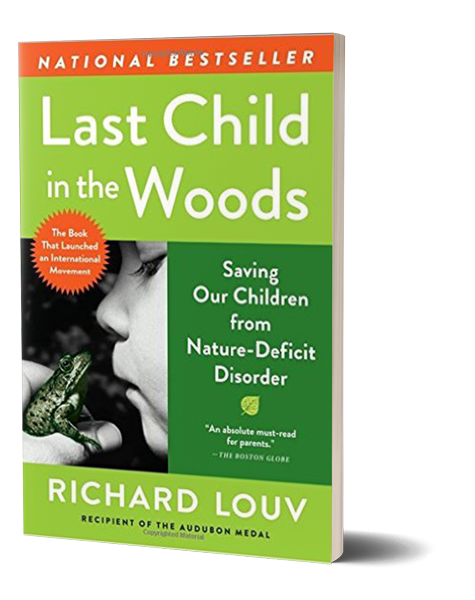It’s very rare that I will devote attention to a book that I half love and that I half hate. Last Child In The Woods is one of those rare exceptions. The first half of the book is so good, I’m willing to forgive the second half of the book, which is so bad. The author, Louv, outlines in his book, Last Child In The Woods, why our children need nature and by corollary, why we as adults need nature. He does a masterful job of showing how playing outside helps children fight allergies, become healthier and avoid attention deficit disorder. He argues convincingly how playing outside will help children develop necessary intelligences that will help them in all areas of life, not just school. He does a great job of talking about how nature has restorative power and will help a child become more creative. We can learn how all of us (adults included) can get relief from emotional distresses. For this reason alone, the book is worth reading. The book will initially demoralize you and then when you have given up hope, will turn the corner and encourage you to get outside. In one section, he outlines and describes why kids don’t ride their bikes over all creation and stay out until dark any more — partly out of fear that they will be abducted. He gives compelling evidence on why this is an irrational fear fomented by the news media (the actual stranger abduction rates were as low in the 2000s as ever before). The more compelling and difficult issue, as it relates to getting kids to be outside, is not the fear of abduction but of lawyers making all outdoor play subject to large lawsuits.
Quibble: If you read the book, I would encourage you to stop before Section Five, where he talks about then how to cure this problem. At this point, Louv takes a strong left turn and describes how the state and the schools should be able to create a utopian environment where children can be outside and commune with nature. At one point, he suggests that a benevolent “they” who could create planned communities every 50 miles apart with a maximum population of 200 as a way of helping us all reconnect with nature. This type of (benevolent) totalitarian intervention is not exactly what I expected when I picked up a book about how wonderful it is to get outdoors.
Bottom Line: Go outside and play. Send your kids outside to play. Not only will they have fun, it will be good for them.

